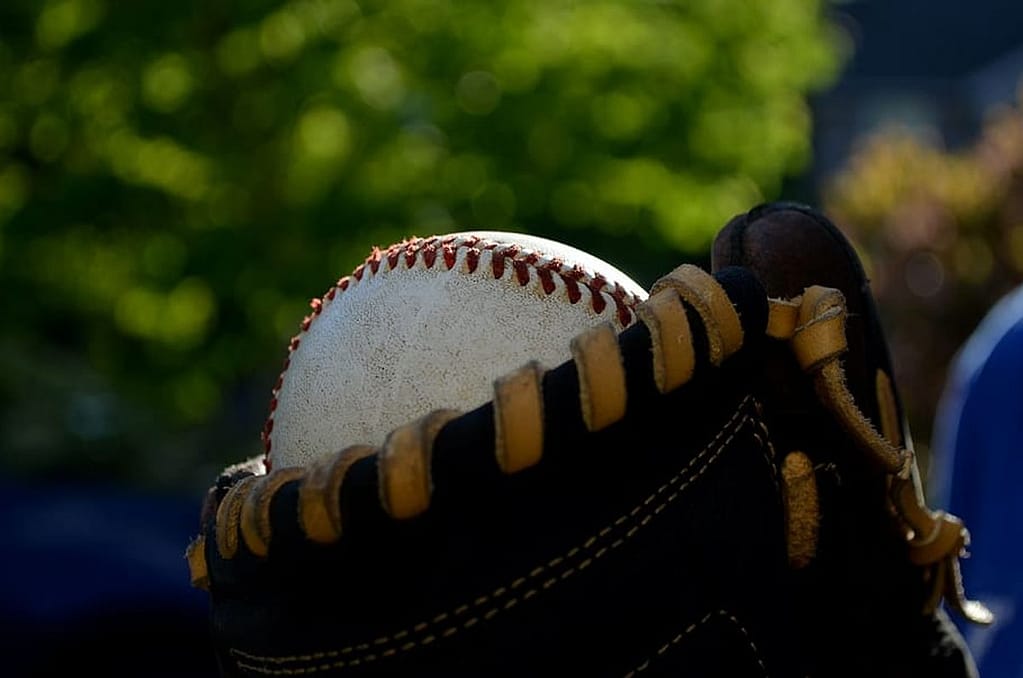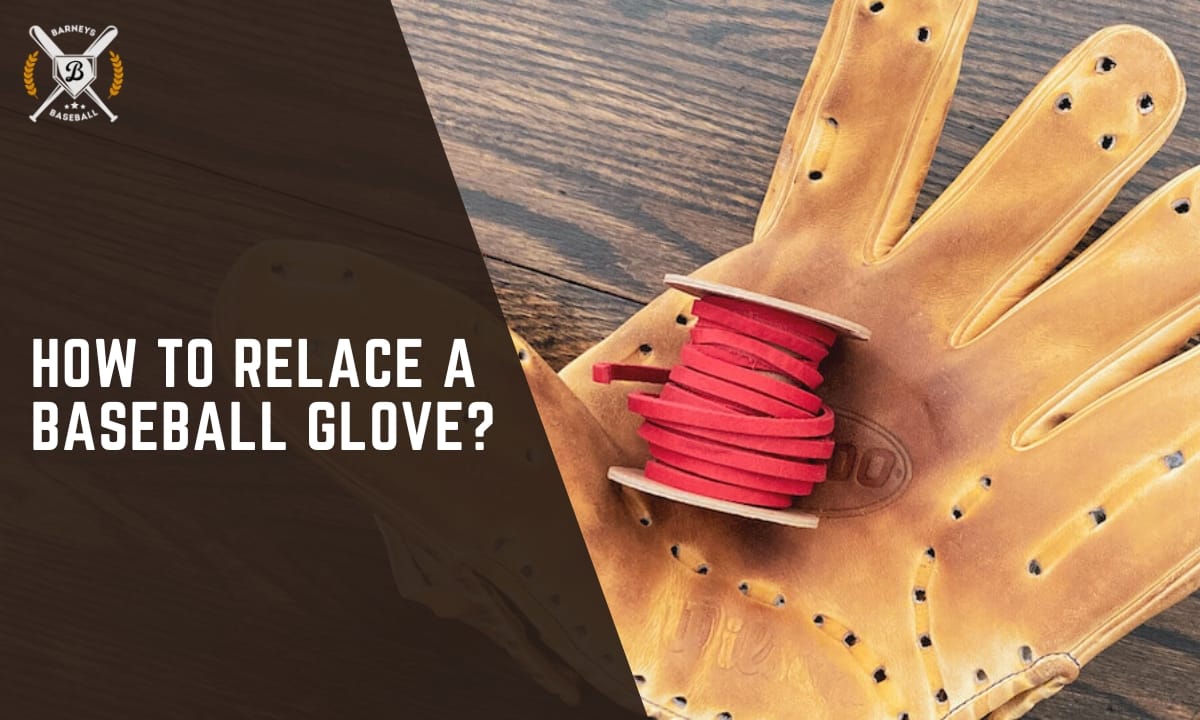Knowing how to relace a baseball glove can prolong its lifespan and improve its performance on the field.Relacing a baseball glove is an essential skill for any baseball player or enthusiast. Whether you’re repairing a well-loved glove or customizing a new one. This step-by-step guide will walk you through the process, from selecting the right lace material to adding the final touches for a professional finish.
Key Takeaways
- Choosing the right lace material is crucial for the durability and performance of your baseball glove.
- Properly preparing the glove by cleaning it and removing old laces ensures a smooth re-lacing process.
- Starting the lacing process correctly sets the foundation for a secure and tight weave.
- Creating a tight weave and securing knots tightly are key for a strong and long-lasting re-lacing job.
- Trimming excess lace and conditioning the glove after re-lacing will give it a polished look and maintain its quality.
Selecting the Right Lace Material

Choosing Leather Laces
When opting for leather laces, you’re choosing a traditional and time-tested material for your baseball glove. Leather laces are known for their durability and ability to conform to the glove’s shape over time, offering a custom fit as they break in. It’s important to select high-quality leather that can withstand the rigors of the game and the elements it’s exposed to.
Leather laces come in various thicknesses and widths, which can affect the glove’s feel and performance. Here’s a quick guide to help you choose:
- Standard laces: Typically 3/16 inch wide, suitable for most positions.
- Thicker laces: Often 1/4 inch, recommended for catchers or high-stress areas.
- Narrow laces: Usually 1/8 inch, used for smaller gloves or those preferring a lighter feel.
Remember, the choice of lace can significantly impact your glove’s functionality and your comfort on the field. While leather laces may require more maintenance, their adaptability and classic look make them a favorite among many players.
Related: How to oil a baseball Glove?
Considering Synthetic Laces
When it comes to re-lacing a baseball glove, synthetic laces offer a modern alternative to traditional leather. Synthetic laces are known for their durability and resistance to elements, making them a practical choice for players who frequently play in wet or humid conditions. Unlike leather, synthetic materials do not absorb water as readily, which helps maintain the glove’s shape and weight consistency during play.
- Pros of Synthetic Laces:
- Weather-resistant
- Consistent performance
- Low maintenance
- Cons of Synthetic Laces:
- Less traditional feel
- May be less flexible
While synthetic laces may not provide the classic aesthetic or feel of leather, their functional benefits cannot be overlooked. They are particularly suited for players who prioritize longevity and ease of care in their equipment.
It’s important to weigh these factors against personal preferences and the demands of your position on the field. For instance, a catcher might prefer the sturdiness of synthetic laces, while an outfielder might opt for the suppleness of leather.
Preparing the Baseball Glove

Cleaning the Glove
Once you have your baseball glove in hand, the first step is to ensure it’s clean and free of debris. Cleaning the glove is crucial as it not only maintains the leather’s condition but also provides a fresh start for the new laces. Begin by wiping down the glove with a damp cloth to remove any dirt or dust. If the glove is particularly dirty, you may use a mild soap solution, but be sure to rinse it thoroughly afterward.
A well-maintained glove ensures longevity and optimal performance on the field. Regular cleaning can prevent the buildup of grime that can degrade the leather over time.
After cleaning, allow the glove to air dry completely before proceeding to remove the old laces. Avoid using heat sources like hair dryers as they can damage the leather. Once dry, inspect the glove for any damage or areas that may need special attention during the re-lacing process.
Removing Old Laces
With the old laces removed, you’re now ready to begin the re-lacing of your baseball glove. Ensure that you have all the necessary tools at hand before you start. This typically includes a lacing needle, a pair of scissors, and of course, your new laces.
It’s crucial to start the lacing from the correct point on the glove. Typically, this is from the thumb and then moving towards the fingers.
Follow these steps to start the lacing process effectively:
- Identify the starting point for lacing, which is usually at the base of the thumb.
- Thread the lace through the lacing needle.
- Begin by threading the lace through the top hole and pull it through until you have an equal length of lace on both sides.
- Continue lacing by following the original pattern of the glove, ensuring not to skip any holes.
Remember, the goal is to replicate the original lacing pattern to maintain the glove’s integrity and performance.
Lacing the Baseball Glove

Starting the Lacing Process
Once your baseball glove is clean and the old laces are removed, you’re ready to begin the re-lacing process. Start at the thumb and work your way down to the fingers, ensuring that each lace is pulled tight to maintain the glove’s shape and integrity.
- Begin by anchoring the lace at the base of the thumb.
- Weave the lace through the corresponding holes, following the pattern of the original lacing.
- Pull each section of lace snugly to avoid any loose areas that could affect your grip.
It’s crucial to maintain consistent tension throughout the lacing process to prevent any future slippage or misshaping of the glove.
As you progress, periodically check the tension and alignment of the laces. This attention to detail will pay off in the glove’s performance and longevity.
Related: How to Tape a Baseball Bat
Creating a Tight Weave
Achieving a tight weave is crucial for the durability and performance of your baseball glove. Ensure each lace is pulled snugly to maintain the glove’s shape and provide optimal support. A loose weave can lead to a lack of control and a shorter lifespan for the glove.
- Begin by threading the lace through the first set of eyelets, pulling firmly.
- Continue weaving in an over-under pattern, making sure to alternate the pattern with each row.
- After every few eyelets, pull the lace tight to remove any slack.
Remember, the goal is to create a consistent tension throughout the glove. This will not only improve the glove’s feel but also prevent the laces from becoming loose over time.
Once you have completed the weave, double-check each section to confirm that the tension is even. If you find any loose areas, retrace your steps and tighten the laces accordingly. This attention to detail will pay off when you’re out on the field, with a glove that feels like an extension of your hand.
Securing the Knots
Once you’ve woven the new laces through your baseball glove, securing the knots is crucial for maintaining the glove’s integrity during play. Ensure each knot is tight and sits flush against the glove’s leather to prevent any unwanted loosening during use. After tying, pull on each knot to test its strength and stability.
- Start by tying a simple overhand knot at the end of the lace.
- For added security, tie a second overhand knot on top of the first.
- If excess lace remains, consider a double knot or loop for easy adjustment in the future.
Proper knot security is not just about tying it tight; it’s about ensuring the glove maintains its shape and functionality over time. Regularly inspect knots before and after use to address any signs of wear or loosening.
Final Touches

Trimming Excess Lace
After you have successfully re-laced your baseball glove, the next step is to trim any excess lace to ensure a neat finish. Be cautious not to cut too close to the knot, as this may compromise the integrity of the lacing. Leave about a quarter-inch of lace to allow for any future adjustments.
- Use sharp scissors or a lace cutter for a clean cut.
- Burn the tips of synthetic laces to prevent fraying.
- Tuck in the ends of the laces if possible, to maintain a tidy appearance.
Proper trimming and care of the excess lace not only enhance the glove’s appearance but also prevent the laces from becoming snagged during play. It’s a small but crucial step in the maintenance of your baseball glove.
Conditioning the Glove
After re-lacing your baseball glove, it’s essential to condition the leather to ensure it remains supple and durable. Conditioning helps restore the glove’s natural oils, which can be depleted over time, especially after the stress of lacing.
To properly condition your glove, follow these steps:
- Choose a quality leather conditioner that is appropriate for baseball gloves.
- Apply a small amount of conditioner to a clean, soft cloth.
- Gently rub the conditioner into the leather in a circular motion, covering the entire glove, including the new laces.
- Allow the glove to sit undisturbed for a period, as recommended by the conditioner’s instructions, to let the leather fully absorb the treatment.
- Wipe away any excess conditioner with a clean cloth.
Regular conditioning not only keeps the leather in prime condition but also helps to break in the new laces, making the glove more comfortable during play. It’s a good practice to condition your glove periodically throughout its life to maintain its quality and extend its lifespan.
Related: Why Do Baseball Players Chew Gum
Conclusion
In conclusion, re-lacing a baseball glove is a crucial skill for maintaining the longevity and performance of your glove. By following the step-by-step guide outlined in this article, you can ensure that your glove remains in top condition for many seasons to come. Remember to take your time, be patient, and practice the techniques to master the art of re-lacing. With proper care and maintenance, your baseball glove will continue to be a reliable tool on the field. Happy re-lacing!
How to relace a baseball glove FAQs
How often should I re-lace my baseball glove?
It is recommended to re-lace your baseball glove every season or whenever you notice signs of wear and tear on the laces.
Can I use any type of lace to re-lace my baseball glove?
It is best to use leather laces for re-lacing a baseball glove as they provide durability and flexibility. Synthetic laces can also be used as an alternative.
Do I need any special tools to re-lace my baseball glove?
You will need a lacing needle, a glove mallet or hammer, and a sharp pair of scissors to re-lace your baseball glove effectively.
How long does it take to re-lace a baseball glove?
The time it takes to re-lace a baseball glove can vary depending on your experience level, but it typically takes around 1-2 hours to complete the process.
Can I re-lace a baseball glove that has been sitting unused for a long time?
Yes, you can re-lace a baseball glove that has been sitting unused for a long time. However, you may need to condition the leather and reshape the glove before re-lacing it.
Is re-lacing a baseball glove difficult for beginners?
Re-lacing a baseball glove can be a bit challenging for beginners, but with patience and following a step-by-step guide, it is definitely achievable.
